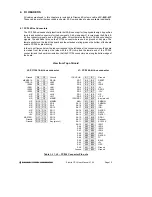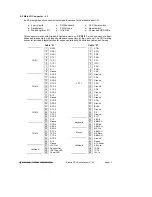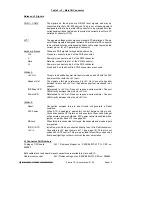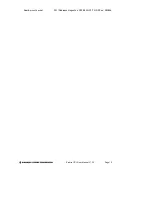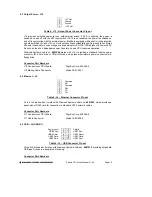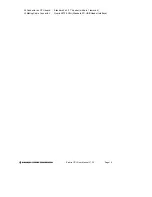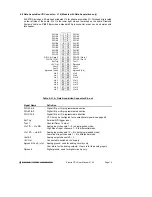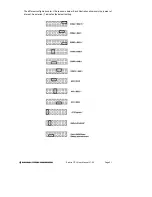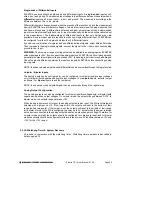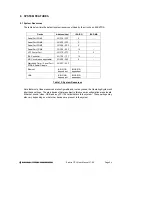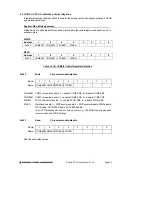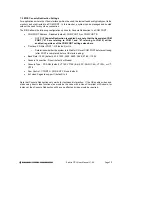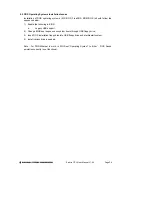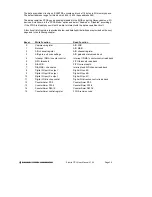
Elektra CPU User Manual V1.00
Page 23
Single-ended / Differential Inputs
ELEKTRA can accept both single-ended and differential inputs. A
single-ended
input uses 2
wires, input and ground. The measured input voltage is the difference between these two wires. A
differential
input uses 3 wires: input +, input -, and ground. The measured input voltage is the
difference between the + and - inputs.
Differential inputs are frequently used when the grounds of the input device and the measurement
device (ELEKTRA) are at different voltages, or when a low-level signal is being measured that
has its own ground wire. A differential input also has higher noise immunity than a single-ended
input, since most noise affects both + and – input wires equally, so the noise will be canceled out
in the measurement. The disadvantage of differential inputs is that only half as many are
available, since two input pins are required to produce a single differential input. ELEKTRA can
be configured for either 16 single-ended inputs or 8 differential inputs.
If you have a combination of single-ended and differential input signals, select differential mode.
Then to measure the single-ended signals, connect the signal to the + input and connect analog
ground to the - input.
WARNING:
The maximum range of voltages that can be applied to an analog input on ELEKTRA
without damage is
±
35V. If you connect the analog inputs on ELEKTRA to a circuit whose ground
potential plus maximum signal voltage exceeds
±
35V, the analog input circuit may be damaged.
Check the ground difference between the input source and ELEKTRA before connecting analog
input signals.
NOTE: In enhanced mode single-ended/differential can be overwritten through the register map.
Unipolar / Bipolar Inputs
The analog inputs can be configured for can be configured for unipolar (positive input voltages
only) or bipolar (both negative and positive input voltages). For
unipolar
inputs, install a jumper
as shown. For
bipolar
inputs, leave the jumper out.
NOTE: In enhanced mode unipolar/bipolar can be overwritten through the register map.
Analog Output Configuration
The 4 analog outputs can also be configured for unipolar (positive voltages only) or bipolar (both
negative and positive output voltages). In unipolar mode, the outputs range between 0-10V. In
bipolar mode, the outputs range between
±
10V.
When the board powers up or is reset, the analog outputs are also reset. The D/A reset method is
selected with a jumper on J13. If the jumper is in, the outputs will reset to the bottom of their
range (called zero-scale). If the jumper is out, the outputs will reset to the middle of their range
(mid-scale). Normally the D/A is configured to power up to 0V, so that when the power is turned
on the device connected to the analog output doesn’t see a step change in voltage. Therefore, for
unipolar mode normally the outputs should be configured for zero-scale reset, and for bipolar
mode the outputs should be configured for mid-scale reset, since 0V is halfway between -10V and
+10V for the
±
10V range.
5.3 J6: Watchdog Timer & System Recovery
J6 is used in conjunction with the watchdog timer. Watchdog timer operation is described in
detail on page 74.


